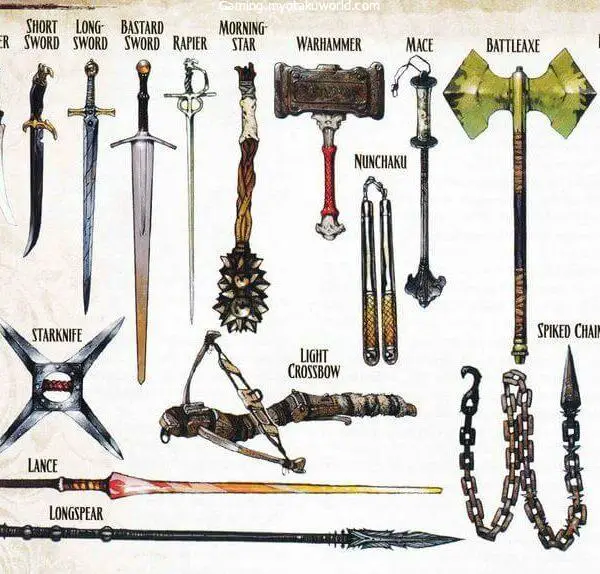If you are new to Dungeons & Dragons Fifth Edition, you may have heard that Lucky feat is too strong.
You may have played or watched games where the Dungeon Master forbids it.
Or maybe you’re sick of seeing strong players always pick it.
Yes, the Lucky ability is really good.
Lucky seems to make some of D&D’s challenges easy, like making it easier to check your abilities and making it more likely that you’ll get a critical hit.
But really, is it that strong?
Let me say why Lucky is a good choice.
I don’t think it is too strong.
And there is a place for it at the table.
By the end of this, you’ll understand why Lucky in 5e is not too strong.
And maybe, just maybe, you’ll be able to persuade your table to agree with you.
Here’s a quick guide to the Lucky feat if you’re new to D&D 5e.
If you have any questions about how it works, here are the answers.
Alright. Let’s get to it.
What is the Lucky Feat 5e?
The main way to use Lucky Feat 5e is to roll an extra d20 three times during a long rest and then pick the die you want.
It is usually used to protect a player character’s bets after a “bad” roll.
Some D&D players think that the Lucky feat is too strong and takes away from the fun of rolling dice.
Lucky Feat 5e Description
According to the Player’s Handbook:
You have strange luck that always seems to come at the right time.
You have 3 luck points. You can spend one luck point to roll an extra d20 when you make an attack roll, a skill check, or a saving throw.
After you roll the dice, but before the result is known, you can choose to spend one of your luck points. You decide which of the d20s is used for the attack roll, ability check, or saving throw.
When an attack roll is made against you, you can also spend one luck point. Roll a d20, and then decide if the attack will use your roll or the attacker’s.
If more than one creature spends a luck point to change the result of a roll, the points cancel each other out, and no extra dice are rolled.
When you finish a long rest, you get back any luck points you spent.
How Does the Lucky Feat Work?
Here’s how the Lucky Feat works in D&D 5e:
- You get 3 luck points.
- You can spend one luck point to roll one more d20 when making an attack roll, checking your ability, or making a saving throw.
- Then you choose which of the two dice you want to use for your roll.
- You have to decide whether or not to use your luck point before you know how the first roll went.
- You can also spend a luck point to use your own roll instead of an attacker’s.
- If both sides use a luck point, it has no effect.
- After a long break, your luck points come back.
- Attack rolls are better when you are lucky. You can roll an extra d20 when deciding if an attack hits if you roll poorly or just want to make sure you succeed.
You can also get an extra Advantage die by using Lucky Feat 5e. Usually, when you play Advantage, you roll two dice and pick the highest one.
With Lucky + Advantage, you can choose the highest of three dice. Since this is such a strong move, some players call it “super advantage.”
Lucky Feat 5e also lets you roll an extra die for disadvantage rolls. Most of the time, when you have Disadvantage, you roll two dice and take the lowest one.
With Lucky + Disadvantage, you can roll again after you’ve rolled your first two dice, and then use your lucky die to replace one of the original dice.
You still take the die with the lowest number, but the odds are much better.
Tip: Save your Luck points for when the DM gets a Crit against you (a natural 20), which forces them to take your roll instead of theirs. It may annoy them, but it’s better than taking massive damage!
Lucky Feat attack roll
This is how lucky feat + attack roll works:
- Roll a d20
- Guess if the attack will work or not.
- Spend a luck point if you want to try to get a better roll.
- Roll a second d20.
- Pick one of the two dice to use.
Say you’re the only one left in your party and you’re an Aasimar Monk facing a Mind Flayer. You can use Step of the Wind as a bonus action to surprise them and get close to them by spending a Ki point. You plan to use your longsword to split their head open.
You roll to see if your sword hits or not. You get a 12. You’re not sure if this will work, but this is a “do or die” moment, and you don’t want to lose your mind! For a lucky insurance roll, you spend a luck point.
You roll an additional d20. It’s a 17! You use the 17 instead of the 12, which will definitely hit.
You bring the sword down on the soft head of the Mind Flayer, causing their silvery blood to spill out. Then, you go around trying to heal your unconscious friends’ wounds.
If you want to act out the “lucky” part, you should tell a story that makes sense. Mind Flayers hate sunlight, so you could say something like, “Just before I swing, a tiny ray of light peeks through the ceiling, startling the Mind Flayer enough that he lets down his guard!”
Lucky feat with advantage and disadvantage
In terms of advantages and disadvantages, the Lucky Feat is a good example of how a specific D&D rule is more important than a general rule.
For advantage and disadvantage, the following is written:
“Sometimes a special ability or spell will tell you that you have an advantage or disadvantage on a check, a saving throw, or an attack roll.
If that happens, you roll a second d20 when you make the roll. If you have an advantage, use the higher of the two rolls, and if you have a disadvantage, use the lower roll.”
But the Lucky Feat says, “Whenever you make an attack roll, ability check, or saving throw, you can spend 1 luck point to roll an extra d20.”
The rule about the Lucky feat takes precedence over the rule about advantages and disadvantages in general.
Lucky feat advantage
Lucky feat + advantage roll works like this:
- Roll 2 d20s for advantage
- Predict if your advantage roll succeeds. Y
- If you want to roll a third die, spend a luck point
- Roll an extra d20
- Keep the Lucky die, or one of the others
- Take the highest of the remaining two dice.
Lucky Feat disadvantage
Lucky feat + disadvantage works like this:
- Roll 2 d20s for disadvantage.
- Predict if your disadvantage roll succeeds.
- If you want to roll a third die, spend a luck point.
- Roll an extra d20
- Keep the Lucky die, or one of the others.
- Take the lowest of the remaining two dice.
Who Can Best Use the Lucky Feat?
Everyone can benefit from the Lucky Feat, but Halflings are especially lucky because their “Lucky” race trait lets them re-roll a 1. This includes rolls of the dice for the Lucky ability.
Halfling Lucky Feat 5e
When a Halfling rolls a natural 1 on the Lucky dice, this is what happens:
- You have decided to attack. Let’s say that the DM gives you advantage.
- The 1 and 3 come up. Bad luck.
- You use the “Lucky” Halfling trait to roll again. You get a 5.
- You now have both a 3 and a 5.
- You decide to use one of the luck points from the Lucky Feat and roll again.
- You roll a 1. Terrible luck.
- You use the “Lucky” Halfling trait to re-roll the 1 since it was a 1.
- You roll a natural 20!
Now you can pick a 3, a 5, or a 20. Halfling luck!
Who is the Lucky Feat 5e Least Useful for?
Everyone can benefit from the Lucky Feat. Some players think it is the best ability in the game because it can be used in so many ways.
You can use the Lucky feat to explore, talk to people, fight, or do anything else.
Should You Choose Lucky Feat 5e?
Yes, most likely, but it depends on how you feel. The Lucky feat is very powerful, but it can also be cheesy.
You shouldn’t take the Lucky feat if you’d rather go with the flow and adapt. You should choose it if you like the security and think a little bit of luck is fun.
Remember that picking a feat means giving up an ability score improvement (ASI) and other feats.









